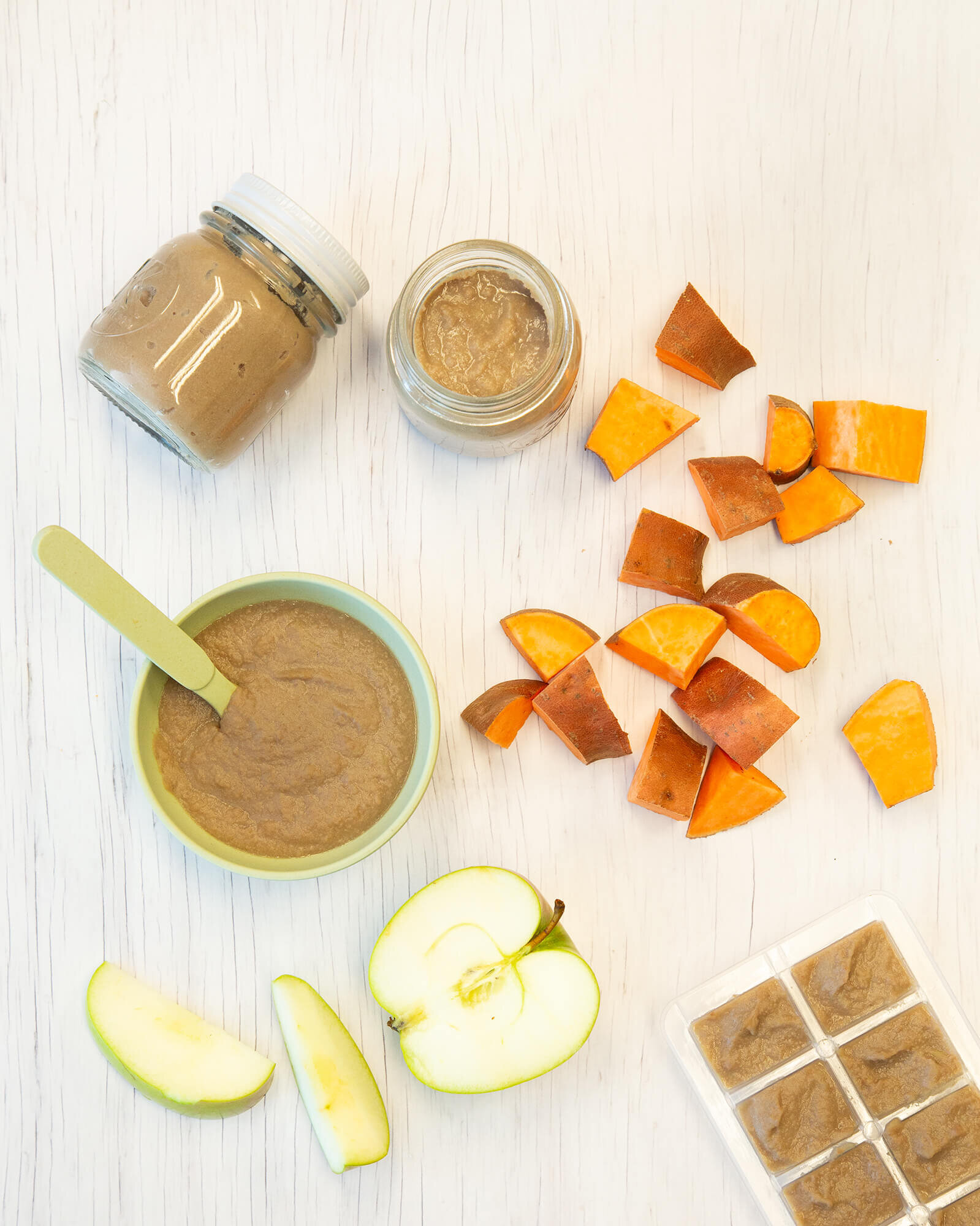Nutrition Spotlight: Iron and Baby Food Pouches
Baby food pouches may get the thumbs up from many parents when it comes to convenience, but they failed to impress Kiwi researchers with their iron content. Registered Nutritionist Regina Wypych takes a look at their nutritional value.
Earlier this year the University of Otago released research expressing concern at the lack of iron in popular baby food pouches. The pouches have become popular in recent years however there has been minimal research done to assess their nutritional quality. Researchers from the University of Otago study looked at 266 baby foods sold in New Zealand supermarkets from 2019 to 2020 and found baby food pouches are incredibly low in iron. On average, the pouches contained just 0.3mg of iron per 100g. One pouch often equates to one meal for bubs, so that’s only 4.3% of their daily iron requirements.
“It is really important babies are offered iron-rich food from six months of age, but our research found pouches across the board did not contain appreciable amounts of iron, nor were they fortified with iron, and this could place infants at risk of iron deficiency if they do not receive iron from other sources,” says Ioanna Katiforis from Otago’s Department of Human Nutrition, who led this research as part of her Master of Science.
These finding are concerning because iron deficiency at this stage of life can affect growth and nervous system development. By six months of age, about the time baby is starting solids (complementary feeding), an infant’s iron stores are depleted. From 7-12 months a baby actually needs 11mg of iron a day – that’s more iron than their father (8mg/day).
Researchers found that these pouches were also higher in natural sugars (not added sugar) as they were more likely to contain sweet fruits and vegetables. They also found vitamin B12 was seven times lower in pouches than non-pouch baby foods for the 12 months+ age group.
Given that meat, fish and poultry are rich sources of the more bioavailable haem iron, parents may assume that the pouches that contain meat, fish or poultry are a better choice. However, the researchers found the amount of meat or fish in these pouches was only 5-10%, compared to non-pouches (baby food in cans and jars) at 5-12%. They suggest that homemade baby food may be a better and healthier option as they have the potential to include larger amounts of iron-rich foods.
Ready-made baby food and pouches certainly have their place when it comes to convenience and feeding baby on the go, but there’s something to be said for making baby foods from scratch and knowing exactly what goes into your baby’s mouth. After all, at this age of their development every bite counts. Check out our baby food recipes below.
Top iron tips for feeding your baby:
Babies who are offered store-brought infant food pouches should also be offered iron-rich foods from other sources to ensure they meet their daily iron requirements
Offer foods from a variety of food groups, not just foods based on sweet fruits and vegetables, and ensure your baby eats some iron-rich foods at least twice a day
Red meat, such as beef and lamb, contains the most readily absorbed, haem-iron
Iron-fortified baby cereals can help to meet a baby’s daily iron requirements
As infants age, and solid foods become a larger part of their diet, it is important that they move on quickly from fruit and vegetable purées to less processed (commercial or homemade) foods
For more tips and ideas on iron-rich foods and recipes for infants check out our Fuelled by Iron resource.
Check out some of my favourite baby food recipes below:
Reference:
Energy, Sugars, Iron, and Vitamin B12 Content of Commercial Infant Food Pouches and Other Commercial Infant Foods on the New Zealand Market Ioanna Katiforis, Elizabeth A Fleming, Jillian J Haszard, Tiana Hape-Cramond, Rachael W Taylor, Anne-Louise M Heath





